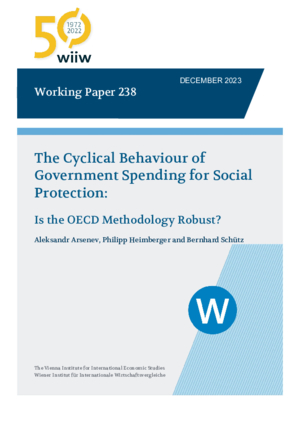The Cyclical Behaviour of Government Spending for Social Protection: Is the OECD Methodology Robust?
Aleksandr Arsenev, Philipp Heimberger and Bernhard Schütz
wiiw Working Paper No. 238, December 2023
59 pages including 33 Tables and 8 Figures
Spending elasticities measure the reaction of different government spending components to the business cycle. They are important inputs for fiscal forecasts, and they are particularly relevant in the context of European Union (EU) fiscal rules, as elasticity estimates enter the estimation of fiscal space. This paper analyses the sensitivity of the estimation method used by the Organisation for Economic Co-operation and Development (OECD) and the European Commission to obtain government spending elasticities by focusing on 11 EU countries in the 1995-2020 period. Our results suggest that spending elasticities are sensitive to small variations in data and model specification. For most EU countries, we reject the assumption that only unemployment spending responds to cyclical variations. While unemployment spending is indeed a major driver of counter-cyclical social spending, other categories of social spending also show signs of responding to the business cycle.
Keywords: Government debt, fiscal deficit, fiscal rules, budget elasticity, government spending, social spending
JEL classification: E62, H62, E32
Countries covered: Austria, Czechia, Denmark, France, Germany, Greece, Italy, Poland, Romania, Spain, Sweden
Research Areas: Macroeconomic Analysis and Policy
